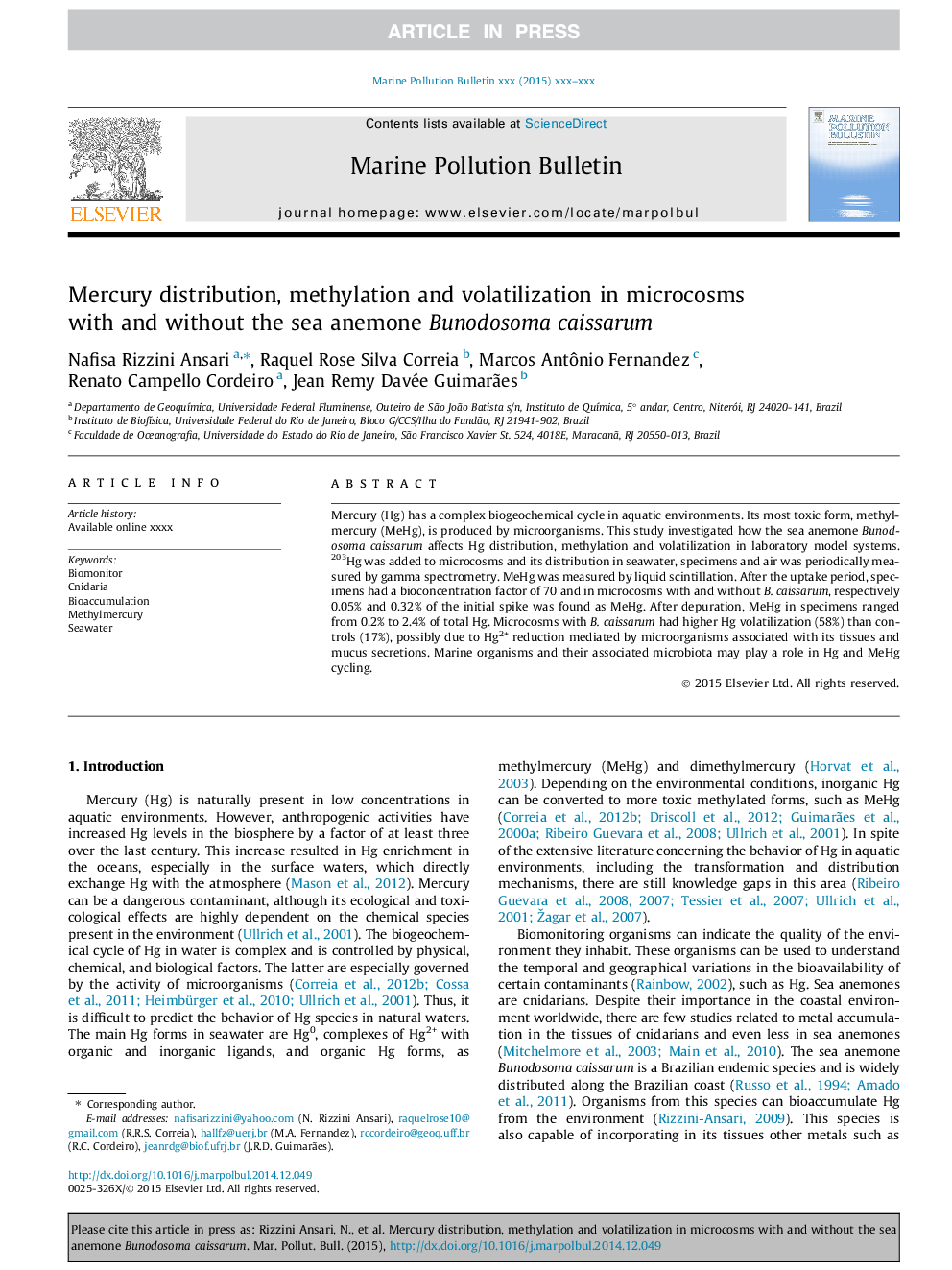| Article ID | Journal | Published Year | Pages | File Type |
|---|---|---|---|---|
| 6357451 | Marine Pollution Bulletin | 2015 | 8 Pages |
Abstract
Mercury (Hg) has a complex biogeochemical cycle in aquatic environments. Its most toxic form, methylmercury (MeHg), is produced by microorganisms. This study investigated how the sea anemone Bunodosoma caissarum affects Hg distribution, methylation and volatilization in laboratory model systems. 203Hg was added to microcosms and its distribution in seawater, specimens and air was periodically measured by gamma spectrometry. MeHg was measured by liquid scintillation. After the uptake period, specimens had a bioconcentration factor of 70 and in microcosms with and without B. caissarum, respectively 0.05% and 0.32% of the initial spike was found as MeHg. After depuration, MeHg in specimens ranged from 0.2% to 2.4% of total Hg. Microcosms with B. caissarum had higher Hg volatilization (58%) than controls (17%), possibly due to Hg2+ reduction mediated by microorganisms associated with its tissues and mucus secretions. Marine organisms and their associated microbiota may play a role in Hg and MeHg cycling.
Related Topics
Physical Sciences and Engineering
Earth and Planetary Sciences
Oceanography
Authors
Nafisa Rizzini Ansari, Raquel Rose Silva Correia, Marcos Antônio Fernandez, Renato Campello Cordeiro, Jean Remy Davée Guimarães,
